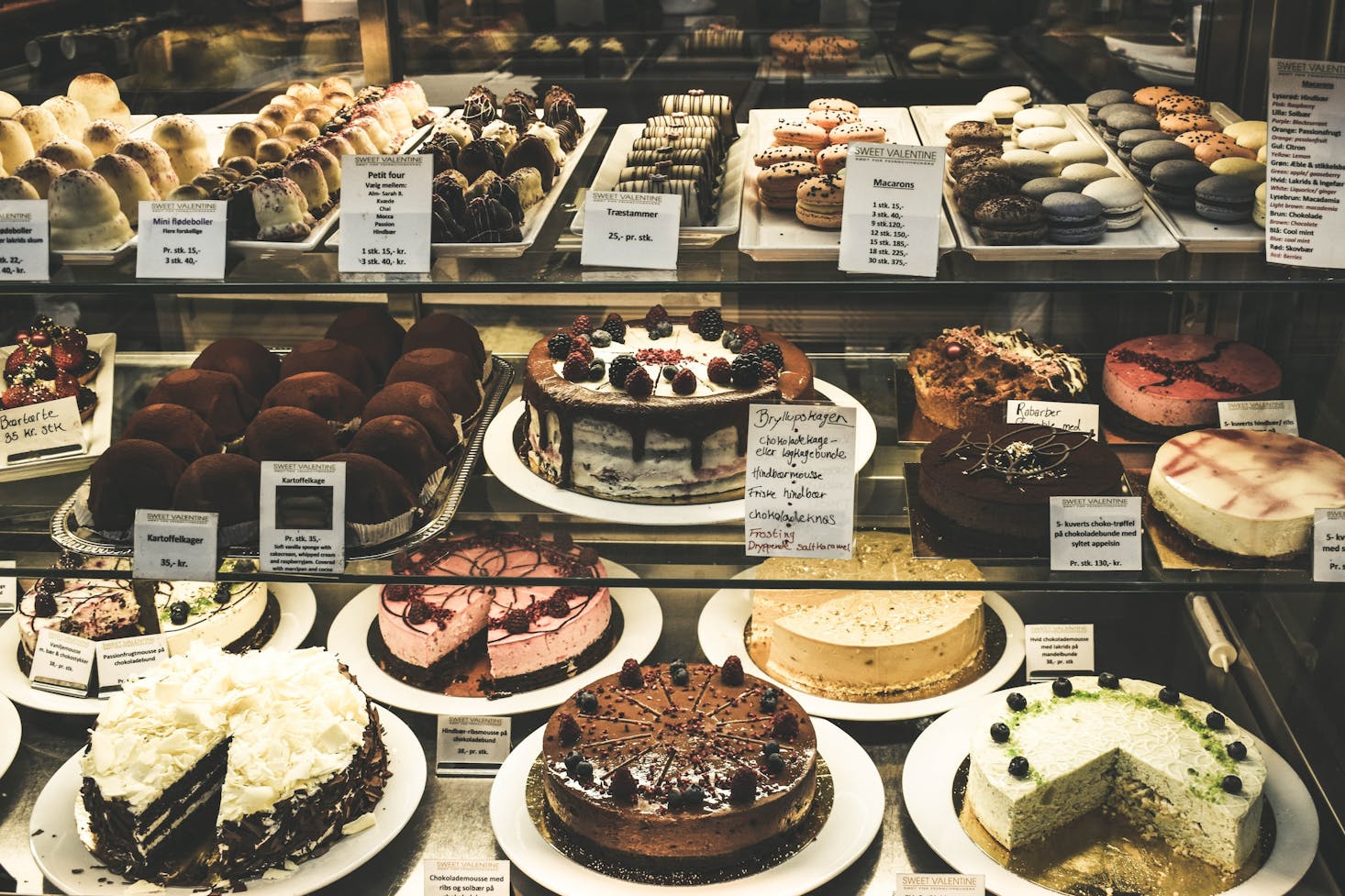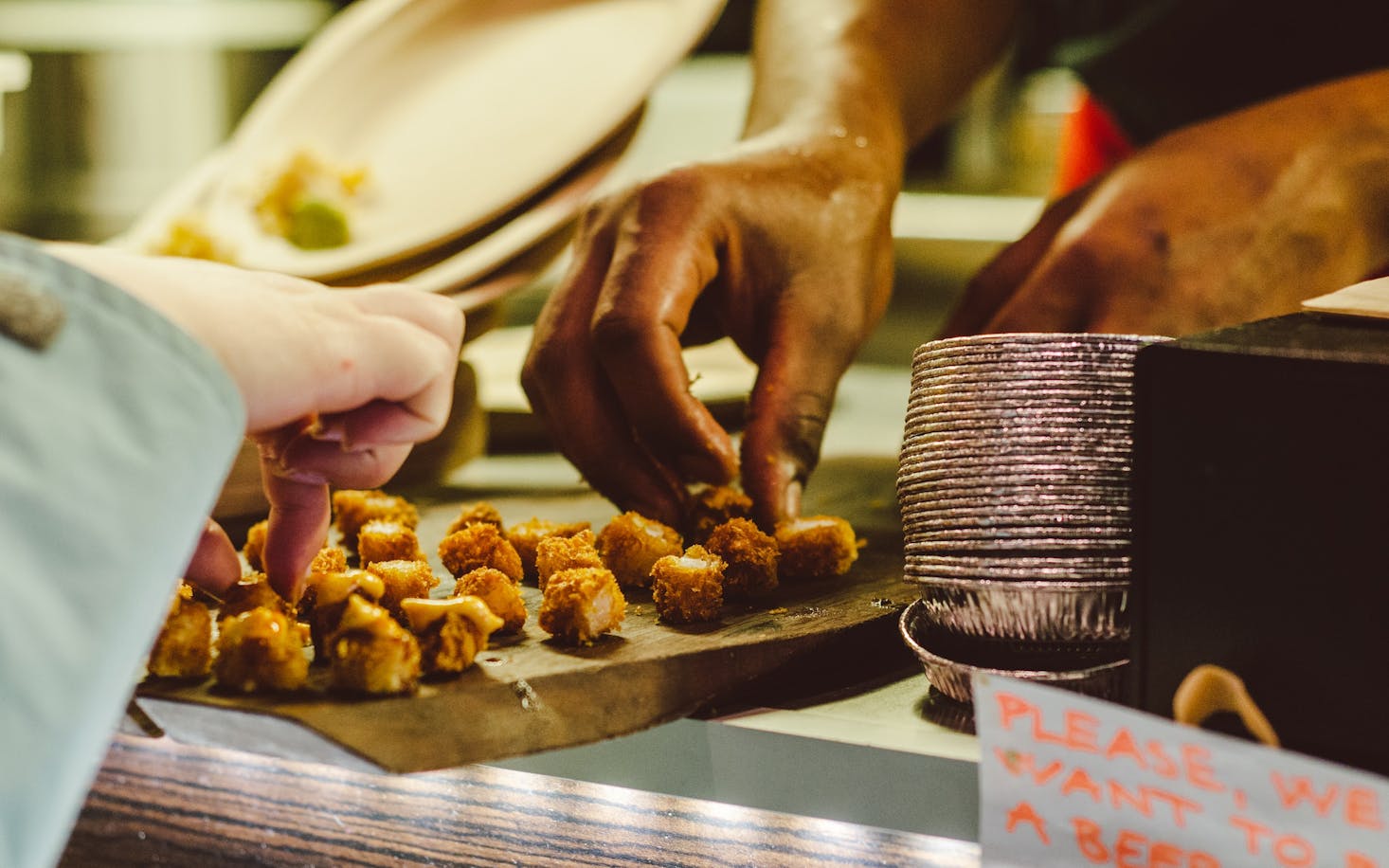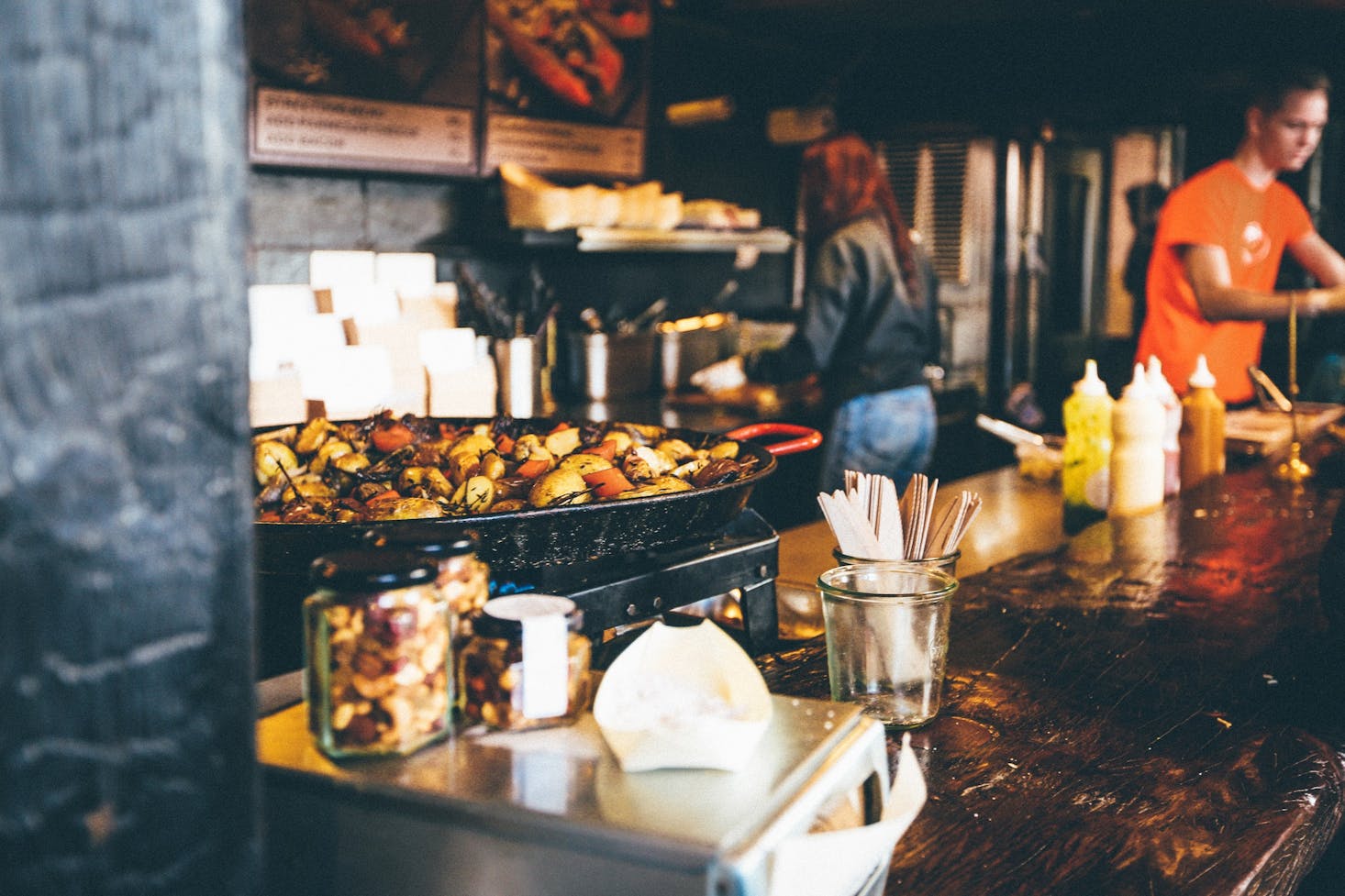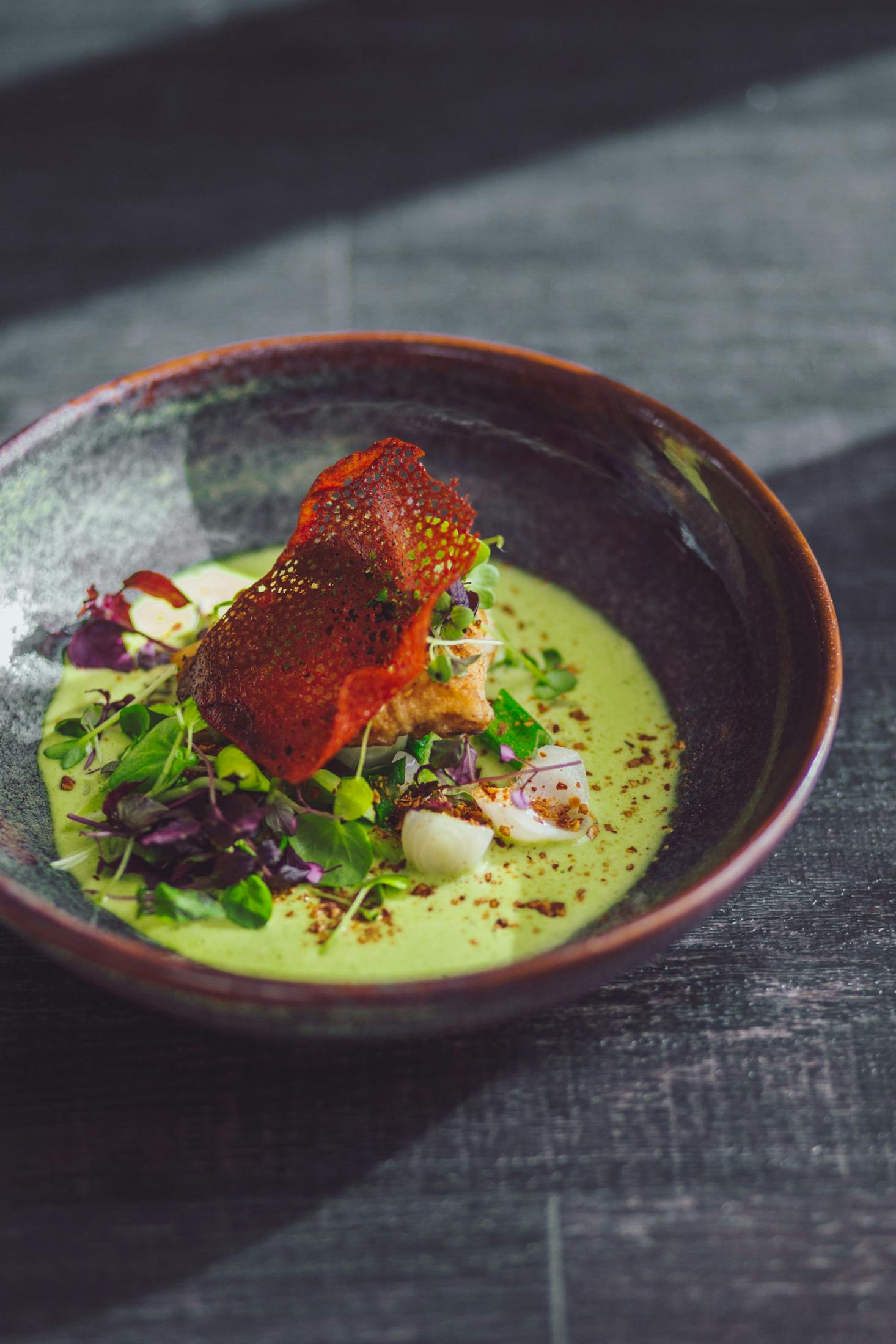What to Eat in Copenhagen: 11 Treats You Should Not Miss

Copenhagen is a food lover’s paradise with plenty of flavors to suit every taste. It is home to Scandinavia’s award-winning chefs and Michelin-starred restaurants, including Noma and Geranium, the only restaurants in the country with three stars. Whether you’re interested in the New Nordic cuisine or want to try traditional Danish food, the Danish capital is a true food mecca that offers a multi-sensory dining experience.
When craving the best street food in Copenhagen, swing by the street food halls and food markets throughout the city centre and beyond. Not only will you get more bang for your buck, but you will also get to taste mouthwatering dishes inspired by cuisines from around the world. Please your palate with some savory porridges, hotdogs, or classic Danish smørrebrød, which has grown into a culinary sensation.
If you’re on a plant-based diet, let the vegetarian restaurants in Copenhagen surprise you. Their creative and imaginative chefs have found ways to serve delicious dishes that even meat lovers enjoy.
Whether you’re experimenting with new flavors or simply love to eat, we’ve compiled a few Danish dishes so you know what to eat in Copenhagen. Leave your bags behind and store them in a secure Copenhagen luggage locker to maximize your Scandinavian food adventure and discover the city's food scene.

Love discounts and traveling?
Sign up for our newsletter and get 10% off your next booking.

Copenhagen Food: Stegt flæsk med persillesovs
Don’t worry if you can’t pronounce this food; no one will judge you. Dubbed the “National dish of Denmark,” Stegt flæsk med persillesovs is a fried pork belly or thick bacon with parsley sauce that hailed from the Danish country kitchen. It was invented around the mid-1700s, though the frying of slices of pork belly has been around since the Stone Age.
Stegt flæsk med persillesovs is a real classic Danish cuisine and one of Danes' popular and favorite meals. Plus, it is inexpensive and easy to make. It’s affordable even for poor households, so when it reached restaurants and kitchens, it became a traditional dish and a part of the exquisite cuisine in the country.
A fried pork belly should be added to your meal plan if you’re looking for food to eat during the cold winter months. It can also be enjoyed year-round, especially in the summer, as Danes love having regular outdoor cooking of pork belly slices.
Copenhagen Food: Flæskesteg
Flæskesteg is one of the main dishes of Denmark and is something you must try when you’re in Copenhagen. This delicious meal is a Danish version of roasted pork, often served with cracklings and caramelized potatoes. It is loved by many locals and is even considered Denmark’s national dish.
For centuries, pork has been a Danish favorite. Roasted pork became a popular meal in the country in the 1860s, right after the Industrial Revolution when wood-fired ovens were introduced. Its traditional recipe involves roasting a joint of pork without removing the rind. Then cut the skin and fill it with spices like salt, pepper, and sometimes cloves.
In Denmark, Flæskesteg has been strongly connected with the Christmas spirit. So when visiting Copenhagen during the Christmas holidays, you’d be surprised to see many people enjoying a flæskesteg sandwich on the streets and at Christmas markets.

Copenhagen Food: Hønsekødssuppe
Hønsekødssuppe is a Danish version of chicken broth soup, which has made its way into the hearts of many people across the globe. It’s a comfort meal you’ll want on a sick day or during the rainy season, as it brings warmth to one’s heart and soul.
This hearty dish is prepared with vegetables like leeks and carrots, clear, flavorful chicken broth, and beef or pork meatballs. Then season it with fresh herbs like parsley and thyme and add shredded chicken meat. Depending on your taste, you can also substitute with savory Danish meatballs and add dumplings to the soup.
Although chicken broth isn’t unique to the capital of Denmark, it’s one of the best Copenhagen food you must try. It is packed with minerals, vitamins, and a healthy dose of fat. Indeed, it has stood the test of time for good reason.
Copenhagen Food: Smørrebrød
The next dish, smørrebrød, is derived from smørogbrød, which is a direct Danish translation of butter and bread. It is made by slicing a piece of rye bread, then combining various toppings such as eggs, meatballs, roast beef, and pickled herring. It can also be topped with shrimp and mayo.
This traditional open-faced sandwich can be eaten as a meal or a snack and enjoyed any time of the day. What makes this dish a total favorite of the locals is the variety of flavors you can add by adding toppings to your liking.
Smørrebrød originally started as a simple lunch for Danish farmers. It was popular back then as it was easy to make and could be prepared with the most basic ingredients. When you visit Copenhagen, many food stalls and even fancy restaurants serve this food.

Copenhagen Food: Danish Hot dogs
You can't get wrong with hotdogs, which is why they are loved all over the world. But Danish hot dogs are on another level. Røde pølser, or red sausage, is the name of the classic Danish hot dog sold on the streets of Copenhagen. You can have it as a quick lunch, midday snack, or a tasty bite after your late night out.
It is said that the origin of a hot dog comes from the 1900s when meat vendors would salvage old sausages using red dye. Fortunately, today’s meat is always fresh. Locals would generally say it’s best to enjoy hot dogs at a hot dog stand when roaming the streets of Copenhagen.
You can find hundreds of stalls and restaurants serving this food, and the good thing about it is that you can enjoy it any time of the day. Additionally, there are plenty of things you can top your hotdog with, including mustard, ketchup, onions, remoulade, salad, and many more. It goes well with any meal and can be partnered with some delicious craft beer.
Copenhagen Food: Brændende Kærlighed
Brændende Kærlighed is as delightful as its English translation, which is ‘burning love.’ It’s a simple Danish food anyone can make using a few ingredients, such as potatoes, bacon strips, and fried onions.
Some sources reveal that this Danish cuisine is more than a century old. It came from the rural area, specifically the impoverished parts of Denmark. The recipe is old and traditional, emphasizing the importance of serving it very hot. Today, it is enjoyed in many local homes and is ideal for cold, dark winter nights.
To make Brændende Kærlighed, prepare your creamy mashed potatoes and top them with bacon strips and fried onion. You can also add finely chopped chilly to give it extra heat.
Copenhagen Food: Flæskestegssandwich
Another favorite Danish food you must eat in Copenhagen is Flæskestegssandwich. It’s a roast pork burger or flæskesteg sandwich that you can easily pack when touring the city and exploring its museums and gorgeous attractions. It’s handy to eat and convenient to carry around, which is why it’s easy to find in food trucks, fast food restaurants, and street food stalls in the city.
This traditional Danish sandwich consists of thinly sliced pork filling and a bun, complimented by pickled, braised red cabbage, ketchup, mustard, or mayonnaise. It’s a famous street food item served everywhere in Copenhagen.
Like any burger or sandwich, flæskestegssandwich has plenty of variations and flavors, though the main roast pork ingredient remains the same. You can change some ingredients or add cheese, apple slices, and crispy cracklings.
Copenhagen Food: Fiskefrikadeller
One thing you must know about Danish culture is that Danes enjoy eating a lot of fish, most notably during the winter. And this long culinary tradition with fish can be reflected in their cuisine, which includes the fiskefrikadeller or fish cakes.
Fiskefrikadeller is a dish prepared by mixing white fish, eggs, milk, parsley, onion, salt, lemon, and pepper. Over the years, different varieties of this recipe have arisen, and some incorporate breadcrumbs, cream, and other seafood ingredients such as shrimp and salmon into the mixture. This pan-fried traditional Danish food is often served with a Danish remoulade, fresh lemon wedges for squeezing, and cucumber.
You can serve Fiskefrikadeller as a unique appetizer or a delicious entrée. You can find this at restaurants or just along the street food markets in Copenhagen. Even if fish isn’t your favorite, you should give this a try while you’re in the capital.

Copenhagen Food: Grød
Grød is a Danish word for porridge, and it’s so famous that it has numerous well-loved cafes around the city specializing in this nutritious dish. But unlike the bland, sticky oatmeal, Grød in Copenhagen is special, delicious, and absolutely flavorful. The basic grain for the porridge is oats, but you can also use rye, rice, quinoa, or flaked buckwheat.
A porridge based on milk and rice may not sound like a fun holiday tradition. However, rice was actually a specialty product imported to Scandinavia. So during Christmas, people would use rice, butter, whole milk, cinnamon, and sugar to treat their guests.
Today, you can make your version of Grød based on your style, taste, and dietary requirement. But the signature ingredient includes oat porridge with toasted almonds, homemade caramel sauce, and apples. You can serve it for breakfast, lunch, dinner, and everything in between.
Copenhagen Food: Rugbrød
If you love bread and are wondering what to eat in Copenhagen, try rugbrød. It’s an authentic and traditional Danish rye bread, which is absolutely essential in Nordic cuisine. It is one of the tastiest and most nutritious bread you can find with whole grains, rye, and a variety of healthy seeds. You can eat it as it is or use it as a base for your open-face sandwiches.
Unless there’s a good Scandinavian bakery near you, rugbrød isn’t easy to find in the US. That’s why if you want to taste authentic rye bread, you either need to make it yourself or eat it in Copenhagen and other Nordic cities.
While rye bread is also famous in Germany, it has a great traditional value in Denmark. Typically, the bread takes two to three days to make, but the simple version will allow you to make it within twenty-four hours by cutting down the fermentation time. However, note that fermentation of the bread dough is a crucial process. That’s because it boosts the nutrients and makes the bread easier to digest.

Copenhagen Food: Brunede Kartofler
A traditional Danish Christmas dinner isn’t complete without brunede kartofler, a dish of small, sweetened potatoes that make every holiday extra special. The caramel glazed potatoes are a sweet treat to add to your dinner table as a side to a roast duck or pork belly.
Brunede Kartofler is typically served only twice a year, on Morten’s night on November 11 and Christmas Eve. Luckily, you don’t have to wait until these Danish holidays to taste it in Copenhagen. It’s easy to prepare and requires minimal ingredients.
Boil the potatoes in salted water for eight to nine minutes before removing them from the stove. Let it soak for additional seven minutes, drain, pour cold water, and peel. When the small potatoes are ready, make a caramel sauce by melting sugar in a pan. Once the sugar turns golden, add your butter, and allow it to bubble up. Pour the boiled potatoes and let the mixture simmer. Then allow the caramel to glaze your potatoes for four to five minutes, and serve.
Enjoy Nordic Cuisine
You can probably try some of these Danish dishes without visiting Copenhagen. But if you want to elevate your dining experience and taste authentic Danish food, you’ll have to eat them in the country’s capital. Even picky eaters don’t have to worry about what to eat in Copenhagen because it has plenty of flavorful local delicacies that will suit your taste. You can start with the traditional hot dog and chicken soup, then make your way to the meat and seafood dishes.
If you need to take a break from trying all the amazing food in Copenhagen, tackle the best hikes in Copenhagen; some are easy while others are extra challenging.

Love discounts and traveling?
Sign up for our newsletter and get 10% off your next booking.
